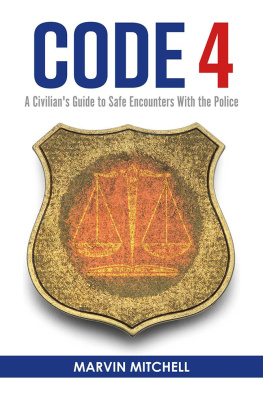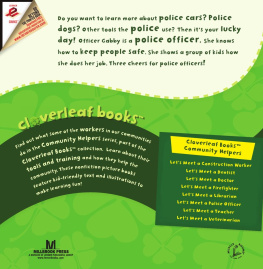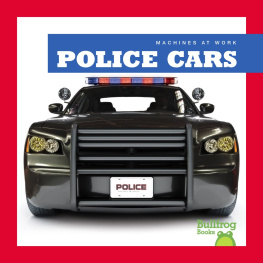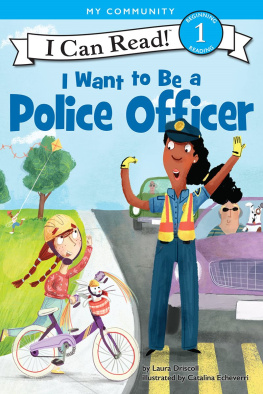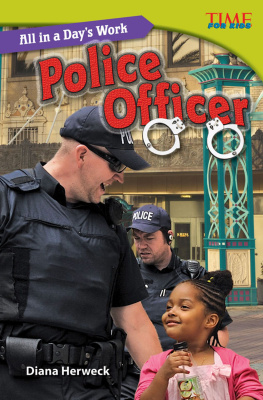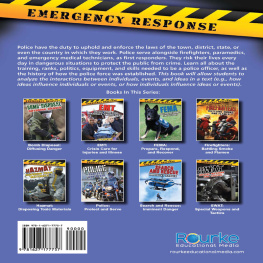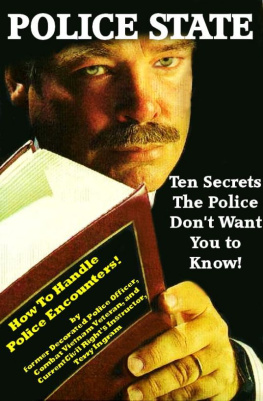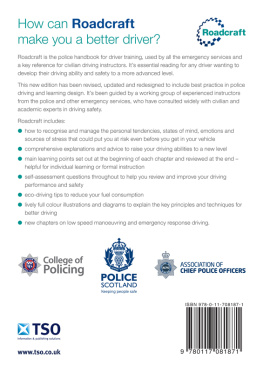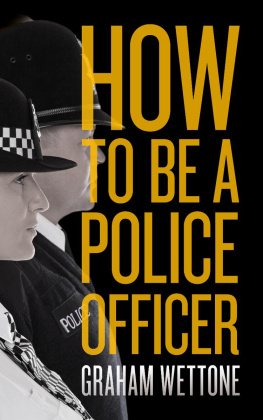Copyright 2019. ALL RIGHTS RESERVED.
No part of this publication may be reproduced, distributed, or transmitted in any form or by any means, including photocopying, recording, or other electronic or mechanical methods, or by any information storage and retrieval system without the prior written permission of the publisher, except in the case of very brief quotations embodied in critical reviews and certain other noncommercial uses permitted by copyright law.
ISBN: 978-1-54396-231-4 (Print)
ISBN: 978-1-54396-232-1 (eBook)
DISCLAIMER: Although the information in this book has been thoroughly researched, I am not an Attorney, and therefore, nothing in this book should be considered legal advice. You should seek professional legal counsel to address your personal situation.
Preface
Police officers engage with civilians in the course of performing their duties. Theyre trained to do so safely, efficiently, and effectively. Thats the plan, yet we all know that not every officer performs the same. Many factors are involved in any situation, any of which can result in encounters that are less than ideal.
Also, even though the police are trained, most civilians dont have any training on how to interact with officers. Most of us wing it, and we dont always do the right thing.
The bad news is that you cant control what an officer does. The good news is you can control what you do, and you can choose to behave in ways that benefit you.
You may feel out of control, even afraid, nervous, or angry, all of which may worsen the situation. The officer will notice and wonder if they have something to fear from yo u.
I wrote this book to give you the information you need to keep yourself safe when you interact with the police.
I also hope the book will help reduce the number of peoplecivilians and officersinjured or killed each year when an interaction between a civilian and an officer goes wrong.
Who This Book Is For?
If you or anyone you know has had an unpleasant experience with law enforcement, or if you worry what might happen if youre stopped or questioned, this book is for you.
Whats in This Book
Chapter 1, The Job of Law Enforcement, describes law enforcement responsibilities and how officers try to stay safe.
Chapter 2, The Top Ten Ways to Stay Safe, gives you the basics of how to behave in an encounter with the police.
Chapter 3, Youre Stopped in Traffic, describes how to behave if youre stopped in traffic.
Chapter 4, Youre Questioned in an Investigation, describes how to behave when an officer wants information from you.
Chapter 5, An Officer Wants to Frisk You, gives you information on how to respond to this request.
Chapter 6, An Officer Wants to Search You, describes the various kinds of searches and your rights in each.
Chapter 7, An Officer Knocks on Your Door, discusses your rights and responsibilities when youre in your home.
Chapter 8, Youre Detained or Arrested, describes police procedures and your rights in these situations.
Chapter 9, Youre Taken into Immigration Custody, describes how to behave in custody and how to get legal help.
Chapter 10, An Officer Treats You Unfairly or Illegally, offers advice on what to do if you experience problems with an officer.
Chapter 11, Concealed Carry Permits and Guns, discusses how to behave when you have a permit and a gun with you.
Lastly, a Quick Reference Chart highlights the main ideas in each chapter. If you arent sure you know the information you might need, go back to the individual chapters to brush up.
Contact Me
If you have questions or a story youd like to share, please contact me via my website, https://code4book.com .
I cant answer legal questions, but Ill be glad to tell you what I know and do what I can to help you find the information you need.
Introduction
In early July 2016, I turned on my television and saw a news story about a young man gunned down by police while driving with his family. The man was Philando Castile, and the seemingly avoidable way his life ended puzzled me. I couldnt reconcile how a family man traveling with his girlfriend and a four-year-old child was killed by police in a hail of gunfire.
From watching the social media live stream that his girlfriend created while Mr. Castile was dying, it seems Philando did inform the officer that he had a concealed carry permit. But something triggered the officer to believe Castile was reaching for his weapon. This made no sense to me. If Philando Castile planned to ambush the officer, why would he tell the officer he was carrying a gun?
I spent the next two years researching police shootings of people who appeared to be no threat to the police or the community. Im the father of three young adults who live in a city, so understanding these situations was crucial for me.
I sought input from friends and relatives who currently or previously worked in law enforcement to get their recommendations for minimizing the chances for this type of occurrence. Finally, I gathered as much information as possible from organizations like the Black Police Officers Association. I collected a mountain of data and condensed it into this small, easy-to-read book.
My Story
My name is Marvin Mitchell. I was honorably discharged from the United States Marine Corps when I was twenty-one, and I spent the following three decades as a software developer and entrepreneur. I spent my Saturdays serving with an organization called MAD DADS. This is where dozens of fathers and grandfathers gathered regularly, and we would protest in front of the neighborhoods crack houses. I also spent the first Sunday of each month traveling to various penal institutions and serving as a prison ministry volunteer. Thats a quick snapshot of my story, now lets jump directly into the reason you bought this book.
Everyone, from well-intentioned community activists to NFL players, has tried various approaches to addressing the issue of seemingly avoidable police shootings.
My life experiences have led me to the following conclusionthe surest way to protect yourself from being unnecessarily injured by law enforcement is to learn the rules-of-engagement for safe police encountersand using them when necessary.
The phrase Code 4 is police jargon for everything is under control. Im told that police officers call in that code when they feel comfortable with a situation. If you have an encounter with an officer, what I want is for you to see the officer click their mic and then hear them say Code 4. That means youll be on your way soon, and hopefully none the worse for wear.
Most civilian encounters with law enforcement arent something to worry about. But keep in mind that a minor and seemingly straightforward situation can escalate.
Thats why you must take every encounter seriously and why you must know what to do if youre stopped or questioned. Reading this book is a start. If you want to know more, I recommend visiting my website, https://Code4Book.com , where you will find additional resources on this topic.
Chapter 1:
The Job Of Law Enforcement
Law enforcement officers are employeespeople like you and meand they do a necessary job. You may have considered a career in law enforcement or perhaps a member of your family is an officer. If so, you realize police officers are at risk of being hurt or killed each shift they work. Thats a sobering thought when leaving home to earn a paycheck.
Given this reality, they would be foolish not to consider their safety in all their interactions with the public. Judging their behavior from this perspective will help you better understand why officers behave as they do and why they insist that you follow their instructions.

